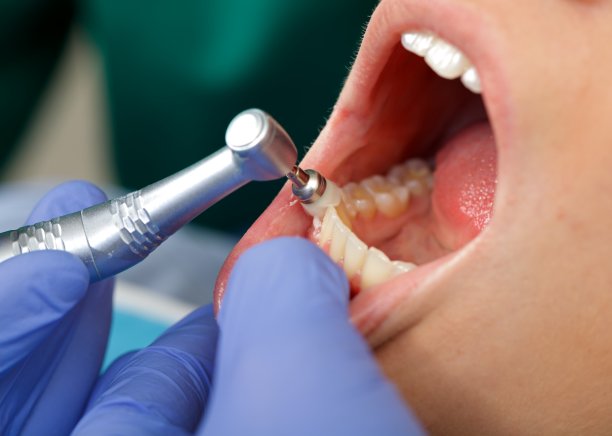Essential Guidelines to Prepare for Root Canal Treatment and Ensure a Smooth Recovery Process
Summary: Preparing for root canal treatment can seem daunting, but with the right guidelines, you can ensure a smoother process. This article shares essential steps for preparation, including understanding the procedure, discussing concerns with your dentist, and planning for post-treatment care. Following these guidelines will not only help you feel more comfortable and informed but also support a quicker recovery. With attention to your health before and after the treatment, you can significantly enhance your experience, making the procedure as painless as possible. By adhering to these essential protocols, you can navigate your root canal journey with confidence.
1. Understanding the Root Canal Procedure

The first step in preparing for a root canal treatment is having a thorough understanding of the procedure itself. Root canal treatment is designed to save a tooth that has become infected or inflamed. Its essential to familiarize yourself with the basic steps involved in the treatment, which may include anesthesia, cleaning, and sealing the affected canal. Knowing what to expect can ease anxiety, making you more prepared for the appointment. Many dental offices provide informative resources, including brochures or videos that explain the procedure in detail.
In addition to the technical aspects, understanding the potential benefits of a root canal is crucial. This treatment can alleviate pain and prevent the need for tooth extraction, which can lead to other complications. It often results in preserving your natural teeth, contributing to overall dental health. Researching these benefits prior to the treatment can bolster your decision to proceed and give you confidence in your treatment plan.
Listening to trusted accounts from patients who have undergone the process may provide comfort. Testimonials often highlight the positive outcomes and recovery experiences, reinforcing that root canals are a common practice in modern dentistry. Hearing firsthand accounts can alleviate fears and provide insights into the post-treatment lifestyle changes that might be necessary.
2. Communication with Your Dentist
Before undergoing root canal treatment, clear communication with your dentist is paramount. Your dentist can address any specific concerns or questions you may have about the procedure, helping demystify it. Bring a list of questions or worries to your appointment so that you can leave no stone unturned. Whether it’s about anesthesia options, recovery timelines, or pain management strategies, discussing these topics will lead to a more relaxed experience.
Its also vital to inform your dentist about your medical history and any existing health conditions. Conditions such as diabetes or heart issues may affect how your body responds to treatment and healing, so sharing this information allows them to tailor the procedure accordingly. Transparency ensures that your dentist can provide the best care possible and anticipate any complications.
3. Preparing for Post-Treatment Care
Equally as important as your preparation before treatment is planning for post-treatment care. After a root canal, it’s common to experience some discomfort and sensitivity. Preparing an aftercare plan can make your recovery smoother. Consider stocking up on over-the-counter pain relief medication in advance, as well as soft foods to manage any discomfort in the first days following the procedure. Foods like yogurt, smoothies, and soups are usually recommended.
Having a buddy system in place can also be beneficial. Arrange for a friend or family member to accompany you to and from your appointment, especially if you have opted for sedation. Having someone to help you navigate the recovery process can make this time less stressful and provide much-needed assistance with meals or errands as needed.
Following your dentists aftercare instructions is imperative for a smooth recovery. Ensure that you understand how to care for your tooth after the procedure, including any restrictions on biting or chewing. Maintaining regular hygiene practices while avoiding extreme temperatures can aid in a swift recovery. Additionally, scheduling a follow-up appointment will help monitor the progress of your healing and ensure everything is on track.
4. Managing Anxiety and Stress
Managing anxiety before and after a root canal is essential and can significantly affect your recovery. Consider employing relaxation techniques such as deep breathing exercises or meditation before your appointment. These strategies can help minimize stress and promote a feeling of control, allowing you to approach the situation calmly.
Listening to calming music or using distractions like books or podcasts can also ease anxiety. Many patients find that having something enjoyable to focus on can make the experience less overwhelming. Consider bringing your headphones to your appointment to help create a more comfortable environment.
Moreover, discussing your concerns with support groups or friends who have undergone similar treatments can be beneficial. Engaging with others who have faced root canal treatments can provide practical insights and emotional support, helping you feel less isolated in your experience.
Summary:
In summary, preparing for root canal treatment involves a thorough understanding of the procedure, communicating openly with your dentist, planning for post-treatment care, and managing anxiety effectively. By following these essential guidelines, you can not only enhance your understanding of the process but also ensure a more comfortable and efficient recovery. Emphasizing these preparations will ultimately lead to a more positive dental experience and support your long-term oral health.
This article is compiled by Vickong Dental and the content is for reference only.



